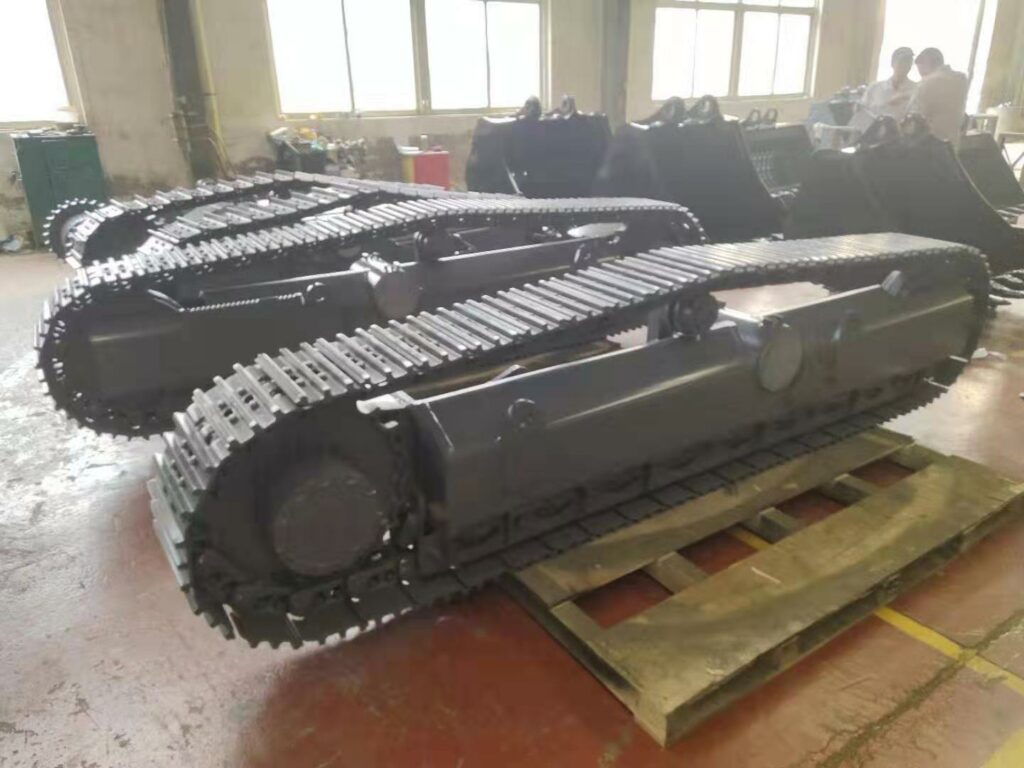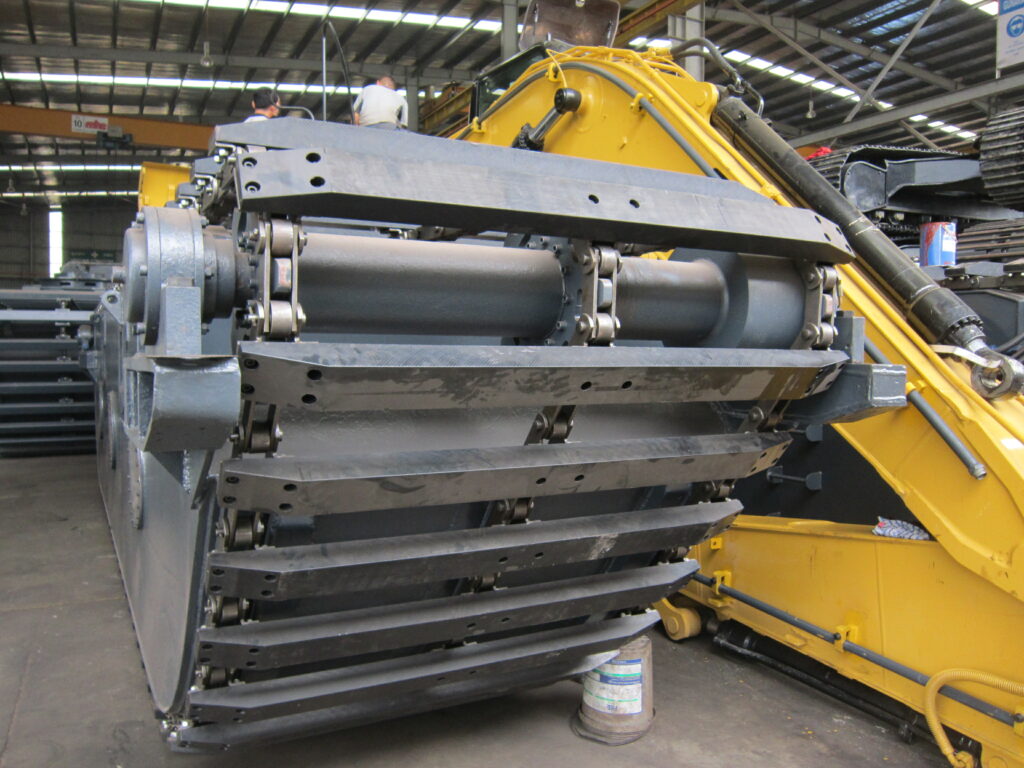Are you looking to improve your performance on the track? If so, then you need to know all about track shoes, adjusters, and guides. Having the right shoe and accessories can help give you an edge over your competition, so it is important to understand all the features and benefits that these products can provide. In this ultimate guide, we will explain what track shoes and adjusters are. The different types of track shoes available? The benefits of using Excavator track. How track adjuster work? How track guides work, and why they are important?

What are track adjuster and shoes ?
Track adjuster, track shoes provide traction and mobility for excavator tracks. Actually, track shoes are steel plates with teeth that grip the ground, while track adjuster controls the fit and tension of the shoes on the tracks.
Track shoes are critical components that work together to provide mobility, grip and control for the excavator. Properly functioning tracks enable the machine to securely move over rough, soft, muddy, icy, rocky and uneven terrain without getting bogged down or losing stability. Tracks allow excavators to maneuver in tight spaces and access small, complex work sites.
What are the different types of track shoe?
There are several different types of excavator track shoe available for various applications and conditions. Some of the most common track shoe types include:
- Rubber pads – Rubber track shoes provide good flotation and mobility on soft or uneven surfaces like dirt, mud, sand or wet grass.
- Steel teeth – Standard steel track shoe has teeth or cleats that provide grip on hard surfaces like concrete, asphalt, rock or gravel.
- Replaceable teeth – Some track shoes have teeth that can be replaced if they wear down or break off. Replaceable teeth allow the shoes to maintain good traction even as the teeth wear down
- Turtle shoes – For amphibious excavators, “turtle shoes” provide hull-like tracks that float the vehicle for operation in shallow bodies of water like lakes, rivers, marshes or coastal areas.
What are the benefits of using track shoes?
There are several key benefits to using excavator track shoes:
- Improved traction. Track shoes provide teeth or cleats that grip the ground and provide forward traction, pushing force and better control when turning or braking. Track shoes prevent spinning out on slippery surfaces.
- Longer track life. Track shoes take the brunt of wear and tear from the ground, protecting the actual track links. This allows the tracks to last significantly longer before needing replacement. Track shoes are a more affordable and lower-downtime solution than full track replacement.
- Negotiation ability. Good traction from track shoes helps the vehicle reliably navigate over rough, muddy, stony and uneven terrain without getting high-centered or bogged down. Track shoes improve the ability of the excavator to traverse difficult work sites where mobility might otherwise be limited.

How do track guide work?
Track guide, also known as track stabilizers, work by providing support and stability to excavator tracks. The main purposes and benefits of track guides include:
- Prevent damage. Track guide prevents excess bending or even breaking of the tracks at protrusions where the tracks pass over rollers, rail guides or sprockets. Without guides, the tracks could derail or experience weak spots that lead to premature failure.
- Improve mobility. Track guides ensure the tracks maintain proper tension and alignment, enabling smooth transport over a wider range of surfaces and conditions. When tracks sag, bend or derail often, mobility and productivity suffer due to the time needed for adjustment, repair or replacement.
- Increase safety. Properly supported and stabilized tracks improve control, handling and visibility for the operator. Without guides, poor track tension or alignment could cause the vehicle to lose stability, steer unpredictably or be prone to fishtailing. especially at higher speeds or on rough ground.
